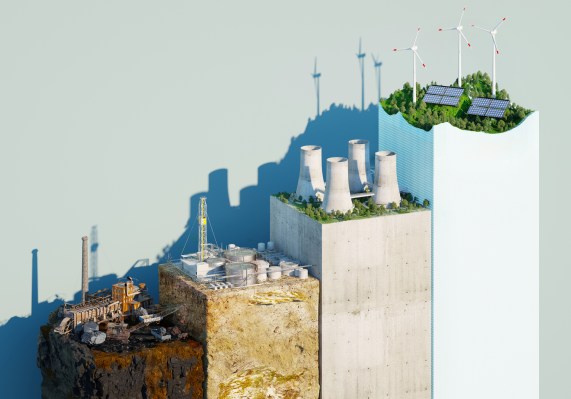Let’s get this out of the way: JPMorgan Chase doesn’t have the best reputation in the climate sector. Since the Paris Agreement was signed in 2016, the bank has financed more than $430 billion worth of fossil fuel projects, according to the most recent Banking on Climate Chaos report, far exceeding its peers.
But there’s some evidence to suggest the bank is turning a corner. In 2021, JPMorgan said it would lend and underwrite $2.5 trillion by the end of the decade “to advance long-term solutions that address climate change and contribute to sustainable development.” Of that, it’s earmarking $1 trillion specifically for climate investments.
Part of JPMorgan’s focus on sustainability is undoubtedly a reaction to changing political and consumer sentiment around the climate and the adverse impact on people. Just in the U.S., the past few years have seen people suffering unavoidable and unprecedented heat waves, with fires raging through towns and forests, not to mention the extreme floods and snowstorms ravaging some areas.
At first, ESG (environmental, social, governance) investing felt like a supplemental action at many investment firms. It is clear that can no longer be the case.
In 2022, the bank hired Osei Van Horne and Tanya Barnes to oversee its climate investments, and added Alex Bell to the company earlier this year. The team has been working to implement the bank’s ambitious plans, focusing on growth-stage investments.
The bank has made two investments so far: It led a $42 million Series E in MineSense Technologies, which focuses on critical minerals, and a $200 million Series E in Arcadia, a renewable energy platform for consumers and businesses.
JPMorgan’s stamp of approval shows that the sector is both one of the most urgent and most promising investment opportunities of this generation. So far this year, climate companies have raised $8.3 billion. In 2021, such companies raised $17.85 billion, and the total fell only slightly in 2022. All of these sums are substantially higher than what the sector received in 2019 — just $3.2 billion.
“This is an extraordinarily large and attractive place to deploy capital,” Van Horne, a managing partner at JPMorgan, told TechCrunch+. “It’s also a great opportunity for startup founders.”
The barrier to entry in this category has also come down, Van Horne pointed out, as hardware, devices and computer power have all become more accessible. “We just see a significant de-risking happening, which makes it more viable for startups to enter and provide solutions that are adaptive,” he added.
This de-risking could help influence other key players to back more green innovation and replace the Western world’s current dependence on fossil fuels.
JPMorgan’s sustainable financing has so far focused on the energy transition. But Barnes, also a managing partner at the bank, and Van Horne feel companies working to mitigate the worst effects of climate change also represent the largest investment opportunities. At the same time, they are hoping to draw attention to the growing need for investment in climate adaptation, saying the area is “extraordinarily underfunded.”
Efforts to deal with climate change tend to fall into two buckets: mitigation and adaptation. Mitigation is often the preferred option since it deals with the root problem — carbon pollution. By eliminating it, the world stands a better chance of avoiding catastrophic warming. Adaptation is the other, and it involves a range of solutions that are aimed at helping humanity cope with a warming world.
In 2020, climate financing for adaptation and mitigation combined had been split roughly evenly between public and private sources, according to a report by the Climate Policy Initiative. But financing for adaptation alone is an order of magnitude smaller than for mitigation — $56 billion worldwide compared with $589 billion for mitigation in 2020.
Most of the funds for mitigation probably come from the public sector, too, though the report points out that the quality of mitigation finance-related data from the private sector is lacking.
There might be a few reasons why. For one, many adaptation projects aren’t undertaken with profits in mind. Seawalls, reforestation efforts, sewer system upgrades and the like are generally considered public projects. Contractors working on them might see returns, but it’s hard to charge people for the services a seawall provides, for example.
What’s more, the need for mitigation financing is most pressing in developing countries, where markets are smaller and less mature. That doesn’t mean there aren’t opportunities; it’s just that they tend to be overlooked.
Clearly, JPMorgan is hoping to capitalize on that. But what is most interesting is that the bank is pouring billions into both fossil fuels and green energy, two positions that seemingly contradict each other.
That sort of hedging might be a savvy move in finance, but it’s less clear-cut when it comes to climate change. When asked about this, Van Horne said that JPMorgan was first to finance the railway industry, the mining industry and all of those heavy industries, but because of that, “there is no better institution better equipped and connected to these industries to help guide and advise them through the real implications that climate will have with respect to their financing and operations.”
“It is all a natural, next-step extension to provide the full range of solutions that go up and across the balance sheet. Our history is not in any way a detriment,” Van Horne added. “It’s an extraordinary asset because we understand these markets better than just about anyone else.”
A myriad of solutions will be needed to solve the climate crisis, and more money isn’t a bad thing, regardless of where it comes from.
